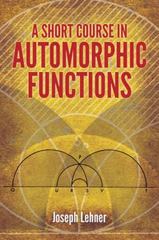pls answer all the questions
1. Consider t-distribution and answer the following;(3pts) a. Determine the t-value to be used to construct a 90 % confidence interval for the population mean based on a sample of n = 12 b. If the level of confidence is 0.99 for a degree of freedom of 19, what is the t-value for a left-tailed test? c. Consider a one-tailed test with a sample size of 26, determine the area to the right of t = - 2.060 2. The mean return of all common stocks on the Philippine Stock Exchange was 3.5 % in 2016. The standard deviation of the returns was about 26 %. A student of finance forms all possible portfolios that invested equal amounts in 5 of these stocks and records the return for each portfolio. This return is the average of the returns of the 5 stocks chosen. What are the mean and standard deviation of the portfolio returns? (Assume an infinite population) (3 pts) 3. A manufacturer of ball bearings claims that their product has a mean weight of 5.02 g and a standard deviation of 0.30 g, what is the probability that a random sample of 100 ball bearings will have a combined weight that is more than 510 g? (3 pts) 4. A certain university recently produced licensed teachers after they successfully passed the Licensure Examination for Teachers (LET). The Professional Regulation Commission (PRC) records show that the examinees from that university posted an average rating of 85.65% with a standard deviation of 1.6%. If 45 successful examinees are selected at random, what is the probability that their ratings will fall between 85.95% and 86.8%? (3 pts) 5. JAM Corporation produces a remote-controlled car that requires three AA batteries. The mean life of these batteries in this project is 35.0 hrs. The distribution of the battery lives closely follows the normal probability distribution with a standard deviation of 5.5 hours. As a part of its testing program, Sony tests samples of 25 batteries. What percentage of the sample will have a mean useful of at least 37.2? (3 points) 6. The mean time to sell a residential property of a random sample of 20 homes sold in the last year is 65 days with a standard deviation of 9 days. Based on the data, develop a 95 percent confidence interval for the population mean. (2 pts) 7. The manager of a grocery store observed that a random sample of 60 customers who bought 10 or fewer items took an average 13.1 minutes of waiting in the express counter before they were able to check out their groceries and have them bagged. If the standard deviation of the sample is 3.4 minutes, construct a 98 % confidence interval for the true average time of the population. (2 pts) 8. A tire manufacturer wishes to investigate the tread life of its tires. A sample of 10 tires driven 30,000 miles revealed a sample mean of 0.28 inch of tread remaining with a standard deviation of 0.07 inch. Construct a 95 percent confidence interval for the population mean. Based on the constructed interval estimate, would it be reasonable for the manufacturer to conclude that after 30, 000 miles, the mean amount of tread remaining is about 0.30 inches? Explain you answer. (3 points) 9. The mean scores of a random sample of 15 students who took a special test is 83.5. If the standard deviation of the scores of the population is 4.1, find the interval estimates of the population mean adopting a confidence level of 95 %. (2 points) 10. A telcom company's data shows that length X of their international calls has a standard deviation of 14.5 minutes. The company would like to estimate the mean length of all calls within 5.5 minutes of the actual mean. Consider a 95 percent level of confidence and determine the required size for the sample. (2 points) 11. Fifteen senior high students were surveyed and asked of the length of time in a week they spend reviewing their lessons prior to the date of examination. The mean and standard deviation of their response are 20.85 minutes and 13.41 minutes respectively. Find the length of the 99 % confidence interval for the population. (2 pts) 12. Is it possible that the actual mean is not within an interval estimate? Explain your answer in the context of a 90 % confidence interval. (2 pts) Bonus points ( 3 points): Prove that in general, 98% large-sample confidence intervals of the mean are about 19% wider than the corresponding 95% confidence intervals







